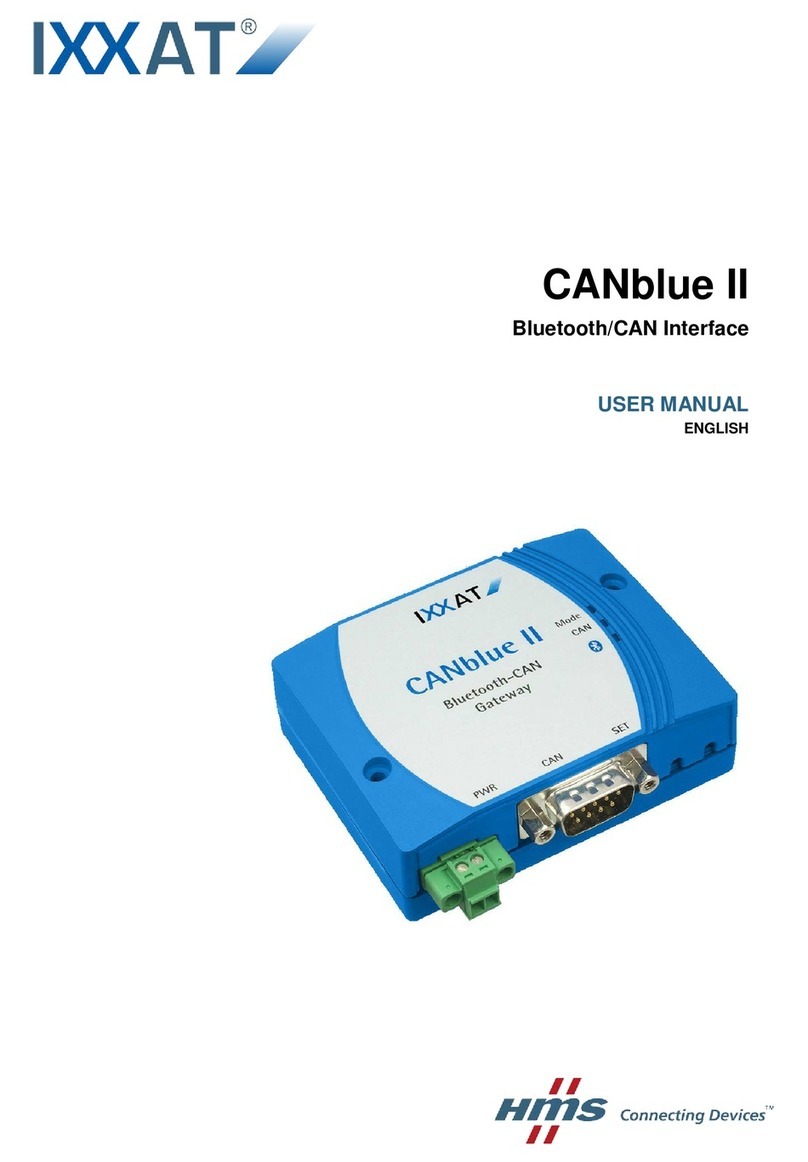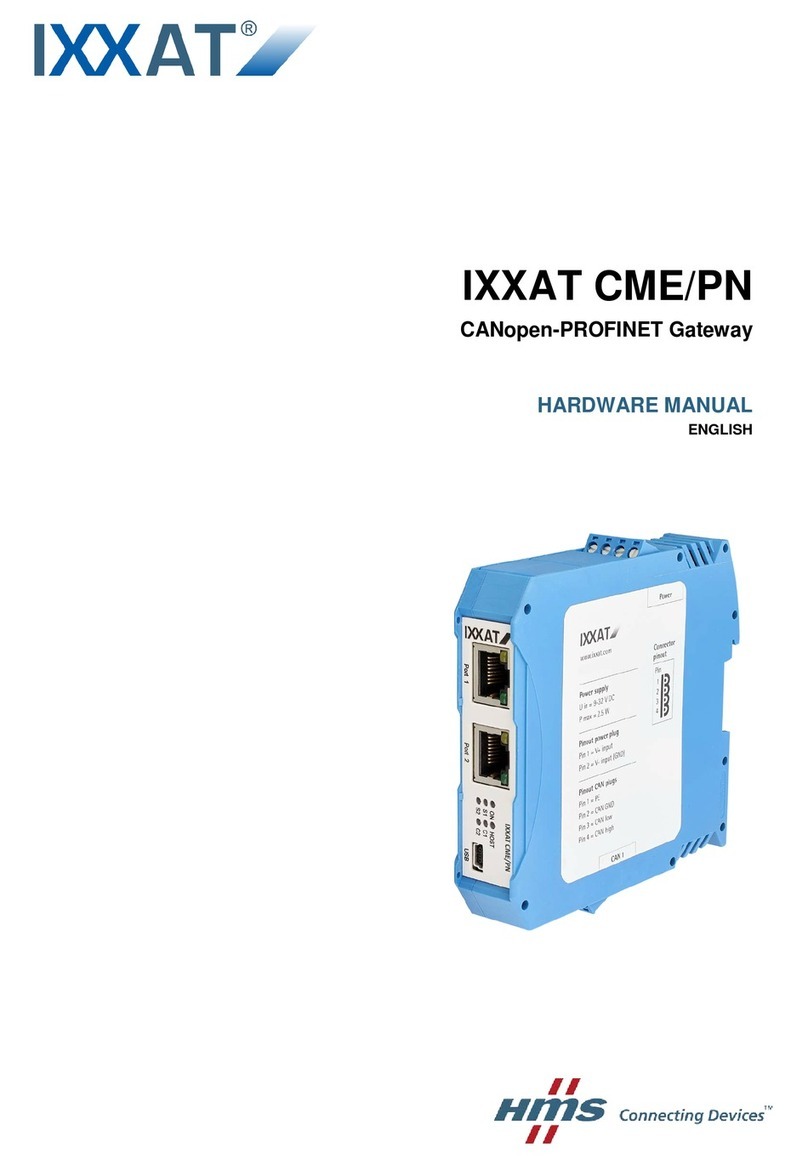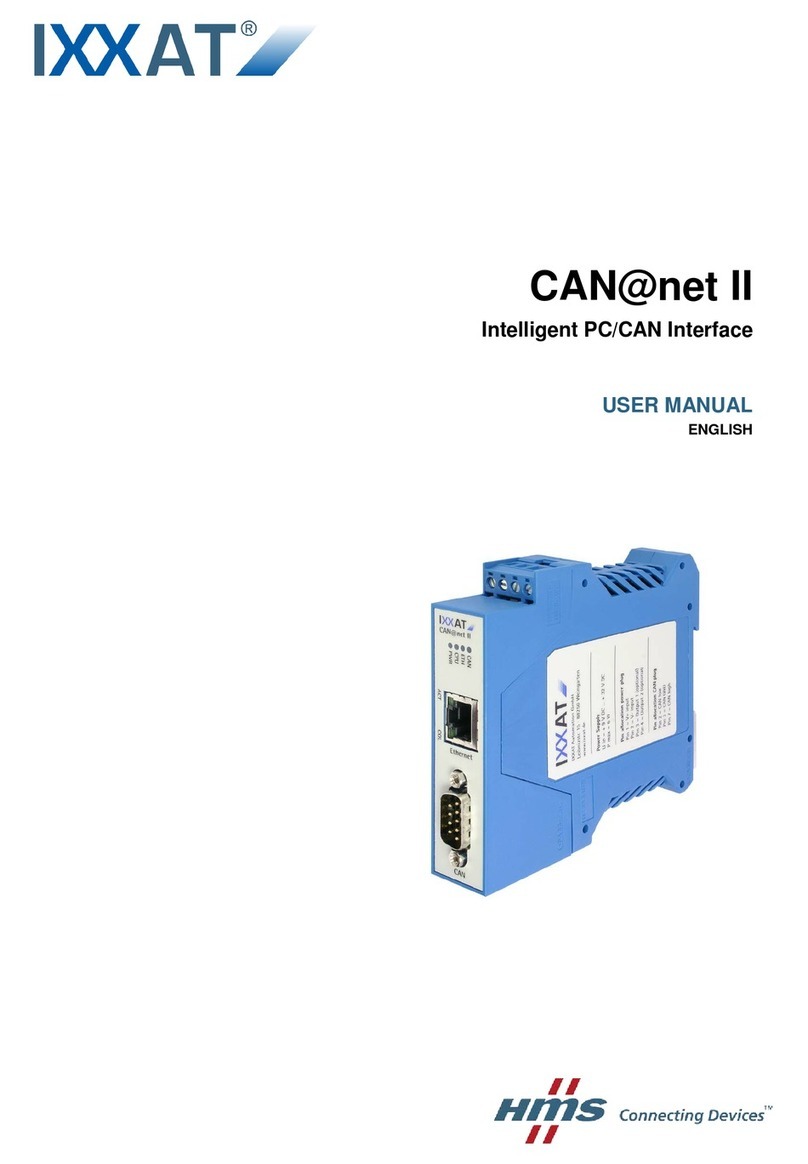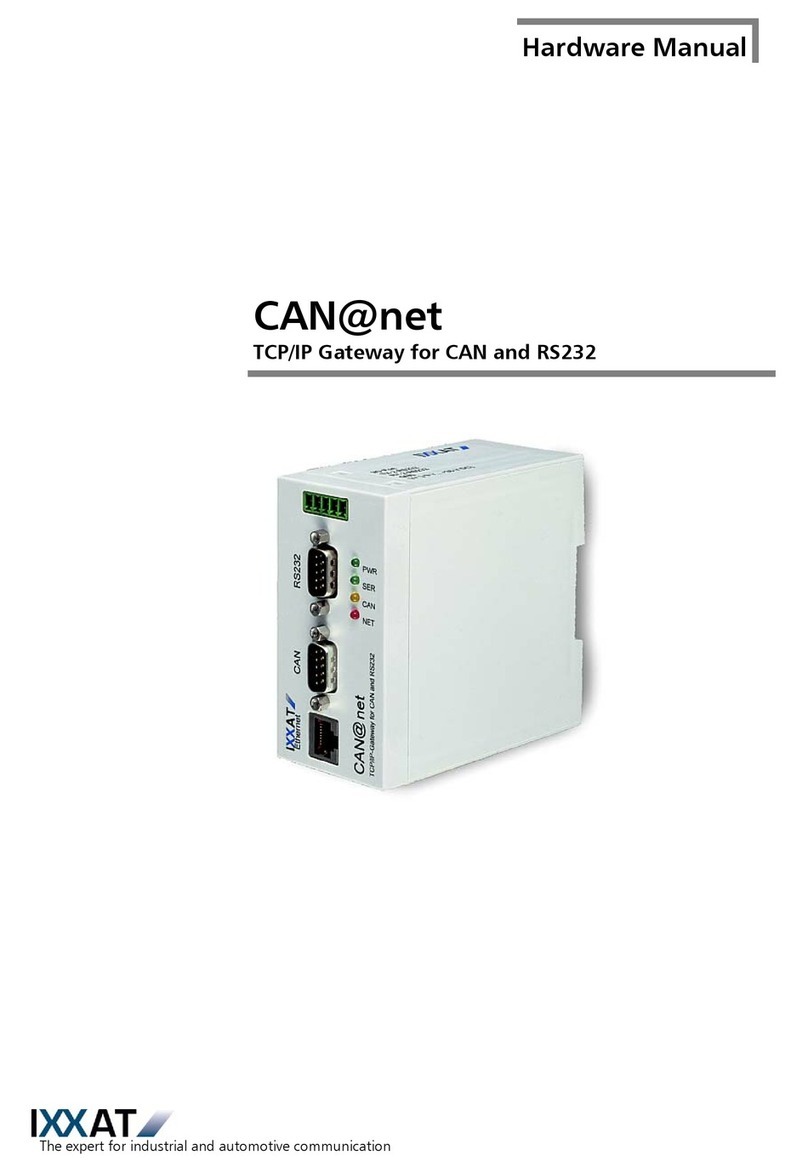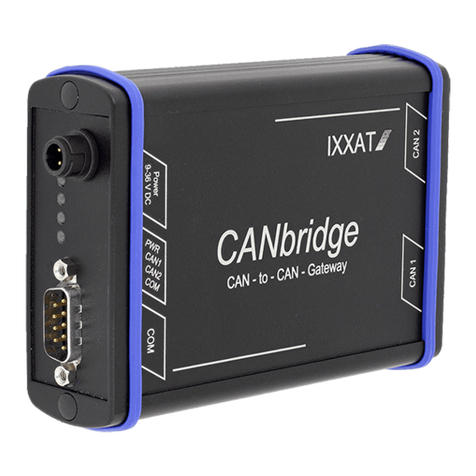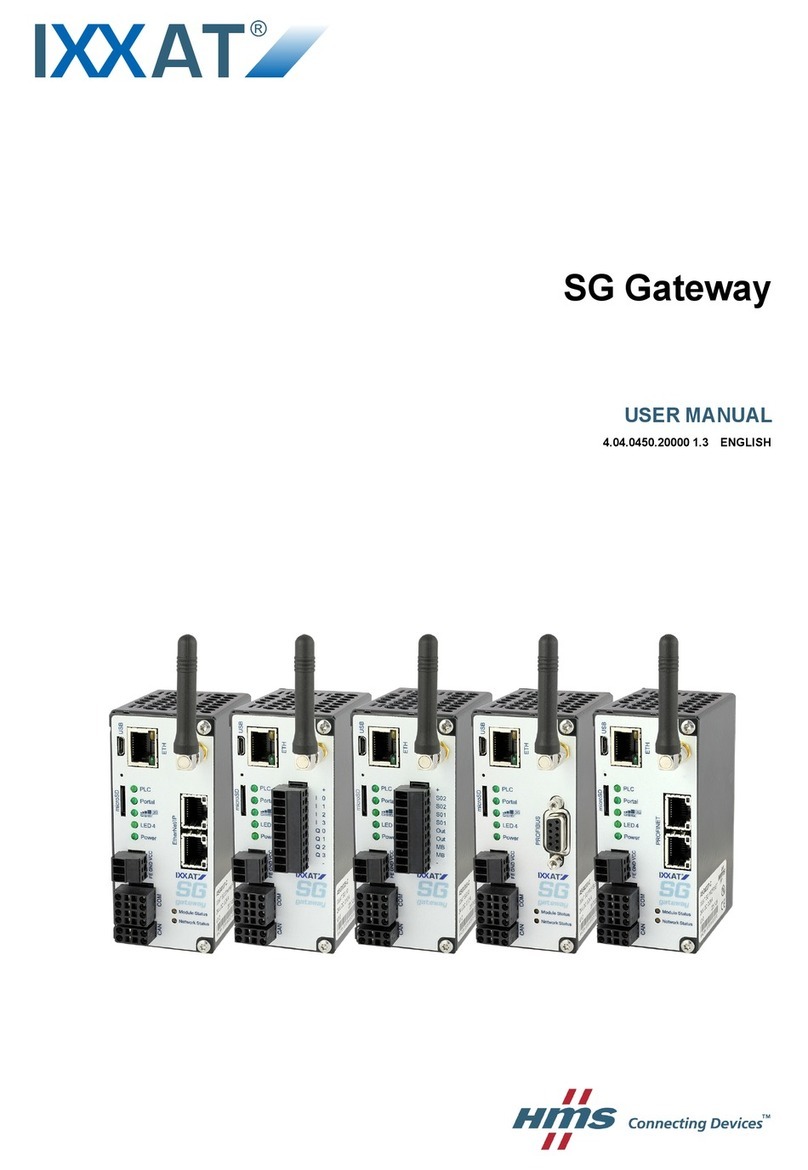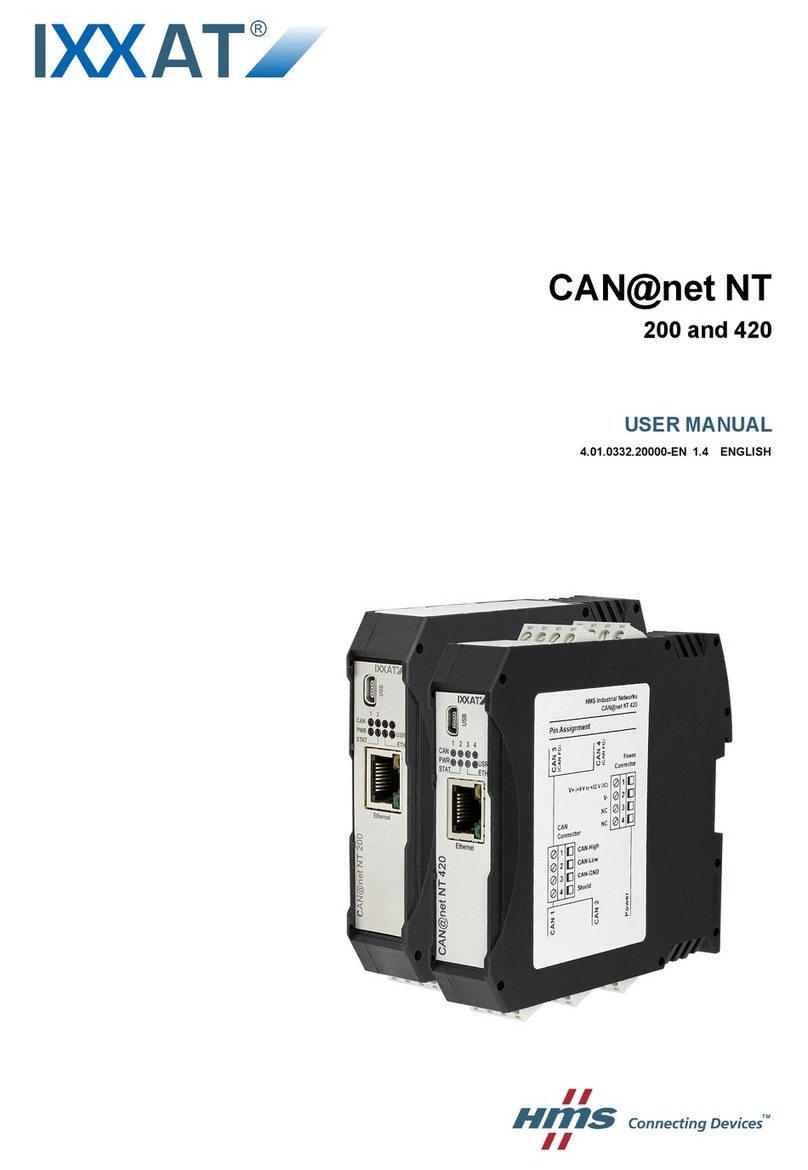Content
3
1Introduction ....................................................................................5
1.1 Overview................................................................................. 5
1.2 Support ................................................................................... 5
1.3 Returning the Hardware......................................................... 5
2Functional Concept........................................................................6
2.1 Gateway Setup ....................................................................... 6
2.2 Bridge Setup........................................................................... 7
2.3 CAN ID Filtering...................................................................... 7
3Overview.........................................................................................8
3.1 Connectors of the CAN@net II/Generic................................ 8
3.2 Basic Device Configuration................................................... 8
3.3 Gateway Configuration.......................................................... 8
3.4 Bridge Configuration ............................................................. 9
4ASCII Protocol Server..................................................................10
4.1 ServerFunction..................................................................... 10
4.2 ASCII Protocol...................................................................... 10
4.2.1 Basic Message Format ..........................................................10
4.2.2 CAN Message........................................................................11
4.2.3 CAN Controller Command .....................................................12
4.2.4 Device Command...................................................................14
4.2.5 Error Message........................................................................16
4.2.6 Info Message..........................................................................17
4.3 CAN Message Filter.............................................................. 18
4.4 Message Sequencing........................................................... 18
4.4.1 Command Processing............................................................18
4.4.2Message Processing..............................................................19
4.5 Getting Started..................................................................... 20
5Web Interface................................................................................21
5.1 Main Page ............................................................................. 21
5.2 Device Configuration........................................................... 22
5.3 Filter Configuration.............................................................. 24
5.4 Expert Configuration............................................................ 27
6Writing Applications.....................................................................29
6.1 Windows Firewall Settings.................................................. 29
